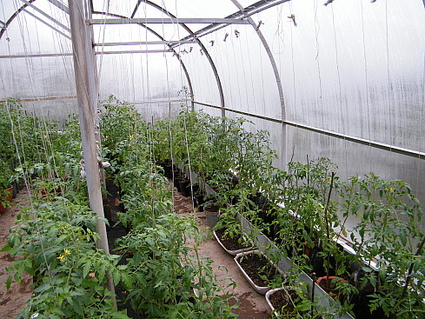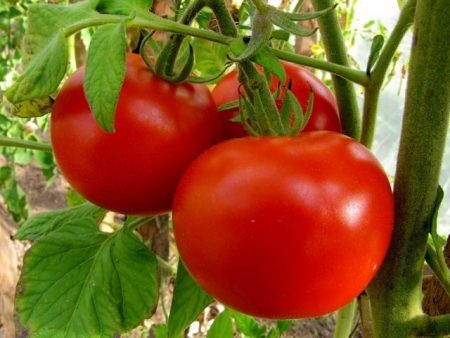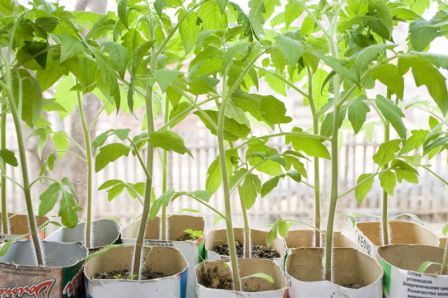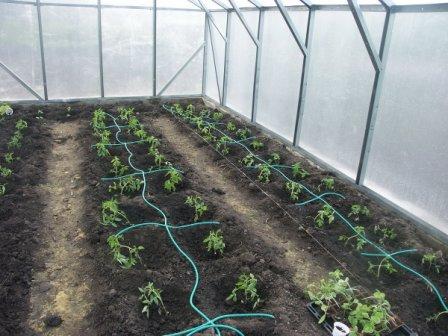 Tomatoes in a polycarbonate greenhouse, their planting and care have their own nuances and secrets, and before you start growing tomatoes in such a greenhouse, you need to take into account all the details, then you will get an excellent harvest.
Tomatoes in a polycarbonate greenhouse, their planting and care have their own nuances and secrets, and before you start growing tomatoes in such a greenhouse, you need to take into account all the details, then you will get an excellent harvest.
To prepare such a greenhouse for the season, it must first be warmed up, checked for sealing, ventilated, and rinsed with a wall sponge. All that needs to be provided is good ventilation and an open area that no trees or neighboring buildings would obscure. Now let’s figure out how to grow tomatoes in polycarbonate greenhouses, what to pay special attention to.
Preparing the soil correctly
Putting a greenhouse on your site, you get a layer of soil, which was originally on the site, but it needs to be improved. To do this, you need to analyze the soil. If the soil is clay, add peat, sawdust and humus. If the soil is peaty - add wood shavings, humus and sand before digging, in case of chernozem soil you also need to add sand and humus (tomatoes do not like too heavy fertilized soils, grow better on loose and light). Then dig the soil, loosen it, add mineral fertilizers in the form of superphosphate and ammonium nitrate.
If you decide to plant tomatoes for the second year in a row in one place, disinfect the soil with a weak solution of potassium permanganate, or spill with a solution of copper sulfate. And it’s best to alternate with planting tomatoes so that they do not get sick, passing infection into the ground to each other. Prepare the beds in advance, at a width of 60-80 cm from one another.
Read also: tomatoes bloom and bear fruit - necessary top dressing.
Polycarbonate Greenhouse Varieties

Of course, you can take any seeds, but in order to get the best harvest, you need to understand which varieties will be better and give a larger crop in the greenhouse. Experts advise: choose hybrids, there will be less trouble and problems. The best of them for such greenhouses are the determinant varieties of the Modula, Harlequin and Raspberry ringing type, and the indeterminate varieties of the Octopus or Alcazar are also good. The second varieties, which do not have growth restrictions, bear fruit earlier, they are formed into 2 stems. Before the frosts, all of their fruits ripen, and they are less sick. If you sow such varieties of the type "Hope" or "Natus" at the end of February, then by mid-June you will have the first fruits on your table. But at the end of August they no longer bear fruit, the entire crop has already been given away. Therefore, if you planted indeterminate varieties in the greenhouse, you will be provided with tomatoes until frost.
If your pets have ovary problems, read what to do if the tomatoes bloom, but the ovaries do not form.
Transplanting

When your plants in the house have reached about 30 cm in height, spill the prepared beds in the greenhouse, transfer the plants, deepening them no more than 4 cm. Plants will receive more nutrients. Plant seedlings from each other at 55-60cm. After planting the plants, 1.5 weeks you can not water them, then arrange watering in the regime of 1-2 r / week, increasing watering at the beginning of flowering and the appearance of fruits. You can adapt such an irrigation system as in the photo, you can dig bottles with matches next to the roots, or you can act in the traditional way.

So that tomatoes are well pollinated in the greenhouse, you need to shake them periodically, then water and spray them, ventilate on a sunny day after spraying.Also, on warm days, open the greenhouse, and hang a jar of sweet jam or honey at the door to attract the bees. Be sure to do top dressing with mullein, nitroammosk and potassium sulfate during the growing season. 3 feeding will be enough at intervals of 2-3 weeks.
A good way is to plant low-growing early ripe tomatoes at the very walls of the greenhouse, closer to the middle - tall. While some are growing, others are already ripening, and you get such a cycle that you are always with the crop until the cold weather. A polycarbonate greenhouse will protect your plants from the weather, protect it from rain, damp, winds, and protect it from unexpected surprises of nature. Therefore, to grow and maintain a good tomato crop with decent care in the greenhouse is much easier than in the open.
You might also be interested in planting potatoes with straw Tomathouse.com.




 Low-growing tomatoes, without pinching: 5 of the most delicious varieties
Low-growing tomatoes, without pinching: 5 of the most delicious varieties Why tomato seedlings grow poorly
Why tomato seedlings grow poorly We grow a tomato in a shell
We grow a tomato in a shell Growing tomatoes without watering according to the method of Kazarin
Growing tomatoes without watering according to the method of Kazarin